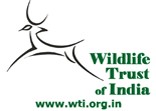
The Late Mr Ashok Kumar – Founder and Chairman Emeritus
Ashok Kumar, Founder and Chairman Emeritus of the Wildlife Trust of India, passed away on August 18, 2016 at the age of 81. It is not often that the term can be used without hyperbole, but Ashok Kumar was a legend. He made several game-changing contributions, particularly in the battle against the illegal trade in wildlife and its derivatives, during the course of a conservation career spanning five decades. Along the way there were many milestones: organisations built and enriched, criminals apprehended and prosecuted, habitats protected, wild lives saved.
Perhaps his love for wildlife took root in the days of his youth, when he walked the Himalayan foothills of Dudhwa National Park. A conservation consciousness, he himself declared, developed when he was working with Tata Steel in east India, travelling often through the region, passing “through forest after forest” as he said in an interview to Sanctuary Asia. “I used to visit Simlipal often, and those forests with their elephants had me totally captivated.”
While still with Tata Steel he began lobbying and working for the creation of Dalma Wildlife Sanctuary near Jamshedpur, which was so notified in 1975 largely due to his determined efforts. A ten-year corporate stint in the Middle East followed, but even there, in his own words, he “began to look for ways in which to get involved with wildlife.” He helped establish the Dubai Natural History Society and, having discovered Dubai to be a major international hub for wildlife products, began the battle that would be his defining crusade in years to come.
He joined WWF India in 1990 with the express purpose of setting up an organisation, the country’s first, to investigate the illegal wildlife trade. Thus was born the Wildlife Trade Monitoring Unit, which a year later became TRAFFIC India. A slew of investigations and seizures turned the national spotlight on traders in fur, bones and ivory, who were operating with impunity at the time. One particular raid in Majnu-ka-Tila in New Delhi, still the largest-ever seizure of tiger bones in India, revealed for the first time the international demand not just for tiger skins but bones, and precipitated the national tiger crisis that has had repercussions in terms of enhanced protection of tigers and their habitats to this day.
He was a consultant to the Ministry of Environment and Forests (MoEF) between 1992 and 1997, and Member Secretary of the Supreme Court-appointed Subramanium Committee that prepared the basic document on control of illegal wildlife trade in India, one of the chief recommendations of which was to create a National Wildlife Crime Control Bureau. He represented India at CITES delegations for over 25 years, helped found the inter-governmental Global Tiger Forum, and served on the Steering Committee of Project Tiger and the National Co-ordination Committee for Prevention of Wildlife Crimes. He was also a member of the IUCN’s Cat Specialist Group and Asian Elephant Specialist Group. In 1998 he helped set up the Wildlife Trust of India, an organisation he would nurture and mould for the next 18 years.
Through all this he remained the quintessential man of action, always on the frontlines. He was the sethji, the unscrupulous buyer of illegal wildlife goods, in countless covert operations, playing a very direct (and often dangerous) part in the arrest of poachers, traders and middlemen. He led investigations that resulted in massive seizures of tiger and leopard derivatives, bear bile, and even products such as shahtoosh shawls and mongoose hair brushes, drawing attention to the plight of ‘lesser known’ species and virtually unknown facets of the wildlife trade.
While he was not a trained lawyer he specialised in Wildlife Law at the policy and practice level. He was something of a serial litigator, filing PIL after PIL to ensure that people involved with and issues related to the illegal wildlife trade were placed squarely in the spotlight. He fought and won several noteworthy cases – be it saving the wetlands in UP from a World Bank funded construction project, procuring orders to move an irrigation colony out of Corbett NP, or keeping the infamous poacher and wildlife trade kingpin Sansar Chand behind bars – and even argued some cases personally in the Delhi High Court.
He came to be known among conservationists as the father of wildlife crime control in India. Indeed, it is said that the term ‘wildlife crime’ would not have existed in the country but for his efforts.
